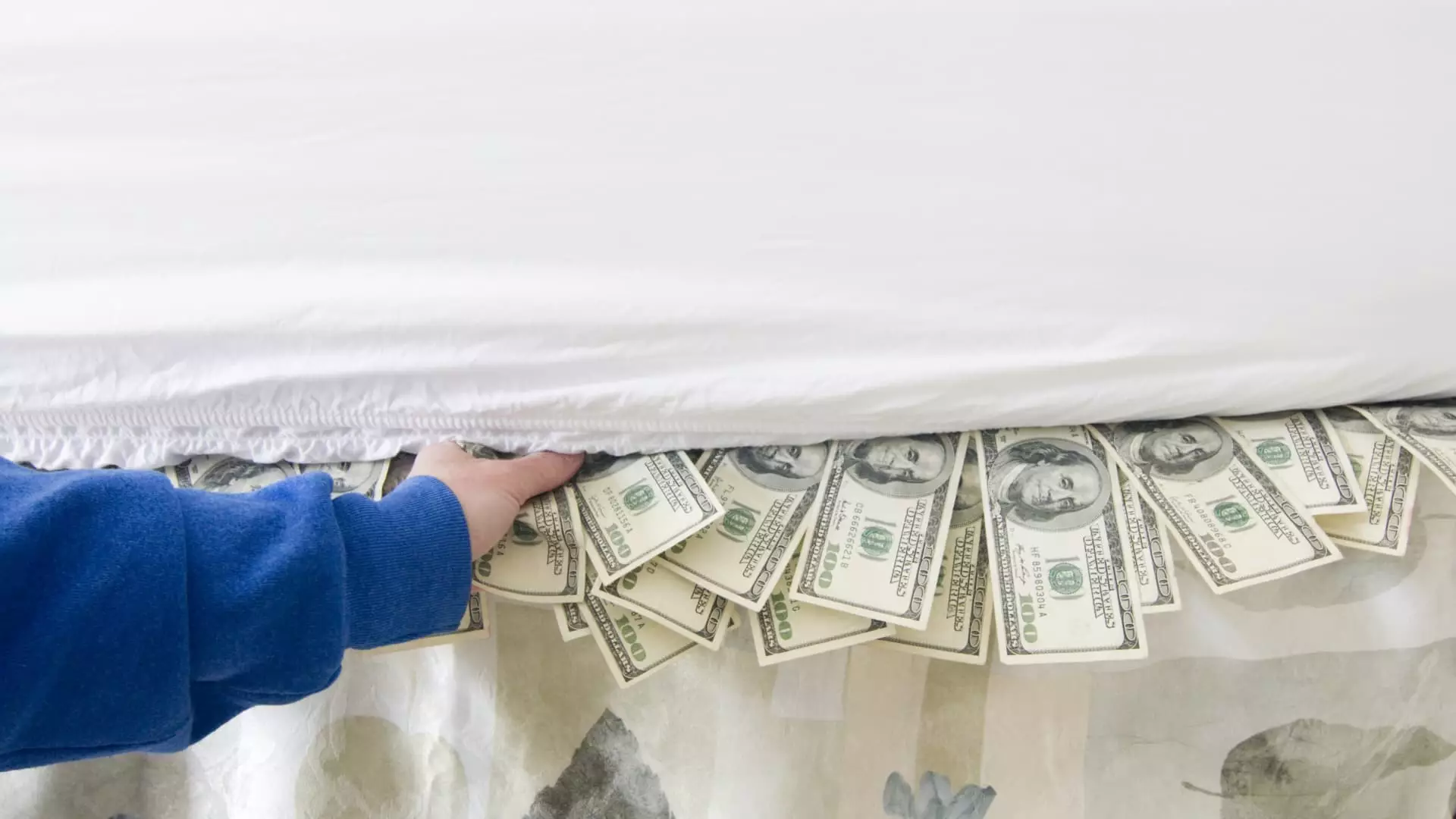In an epoch where digital transactions reign supreme, the age-old habit of stashing cash around the house remains prevalent but riddled with potential pitfalls. According to a recent survey by the financial management app Piere, the average American has roughly $544 hidden in various nooks and crannies at home. While it’s understandable to want an emergency fund easily accessible without needing to hit the ATM, the consequences of improper storage can be dire. This ‘safety’ mechanism may, in fact, expose individuals to significant financial risk.
The cultural impulse to keep cash on hand stems from a deep-seated belief that immediate access to money equates to security. Yet, the reality is that this practice often leads to disarray, increased likelihood of theft, and inadequate protection from issues like fire or flooding. Individuals must appraise the fragility of their home cash stashes and consider more secure alternatives.
Where Are We Hiding Our Cash?
According to the findings from the survey, most individuals store their cash in relatively conventional spots—approximately 10% utilize a safe, a decision that showcases at least a modicum of caution. However, the other locations cited are more unorthodox: money stuffed under mattresses, buried in freezers, or obscured within household decorations. This approach has an underground air about it, evoking images of old treasure maps leading to forgotten valuables. Still, it’s a recipe for disaster when considered through the lens of practicality and safety.
Relying on risky hiding spots is a gamble in itself. A mere 5% of people place their cash in freezers? It seems absurd until one considers the perception that it’s a clever solution. Yet, if thieves are aware of such practices, it becomes an invitation for potential robbery. Furthermore, many homeowners may not realize that even their home insurance policies are not bulletproof against cash loss, typically capping coverage for cash, coins, and precious metals at a dismal $200—a woefully inadequate figure for those relying on physical cash.
Fighting Against Inflation: The Case for Banks
One of the glaring missteps in the mindset around cash hoarding is the illusion that physical currency is a wise investment or a safety net against inflation. In fact, buried cash possesses a superior risk: it loses value as the cost of living rises. Experts argue that individuals would be better served by depositing their funds into high-yield savings accounts, which, as of recent reports, can earn an average annual percentage yield (APY) of around 4.20%. This is significant compared to the negligible returns that come with stashed cash which effectively earns 0%.
The crucial lesson here is that stashing cash does not merely undercut its potential growth; it sabotages long-term financial stability. Inflation erodes cash’s purchasing power, and this grim reality has the potential to cost countless individuals thousands of dollars over time. Rather, those without traditional banking structures may find themselves trapped in a cycle of diminishing returns.
Investing in Financial Security
In volatile markets, many feel the impulse to keep their savings secure in tangible forms. However, financial experts have made it clear that fear can cloud judgment, causing individuals to forgo investment for fleeting comfort. While the notion of having liquid assets is appealing, it often leads to stagnation. Storing excessive cash can prevent individuals from leveraging opportunities that promote wealth growth, effectively stifling financial potential.
Instead of feeling tethered to cash, individuals should ponder their financial strategies. Recommendations like maintaining enough liquid cash to cover only a month’s worth of bills could anchor financial wisdom. The majority of funds should be relegated to savings or investment accounts capable of compounding over time, enabling resilience against inflation and market fluctuations alike.
Crisis Readiness: The Right Approach
While no one can predict natural disasters, there’s no denying the value of preparedness. Experts agree that having a small amount of cash for emergencies is vital, but the methods of storage warrant careful consideration. Financial planners recommend keeping a small sum in a readily accessible yet secure location—a personal financial bag—while larger amounts should reside safely within high-yield accounts. The convenience of immediate access must be balanced against the risks of physical cash being lost or stolen.
Financial literacy plays a crucial role in these decisions. There’s little reason to keep cash scattered throughout the home when clearly defined savings strategies and secure banking options exist. Gather your resources wisely: prioritize maintaining a relationship with your bank while ensuring that every family member understands where vital resources are stored. This balance can enhance effectiveness and safety, allowing individuals to navigate financial crises much more gracefully.

